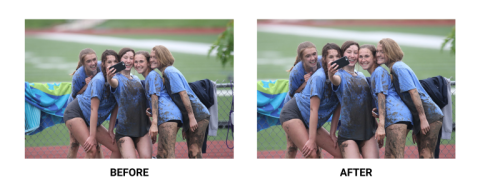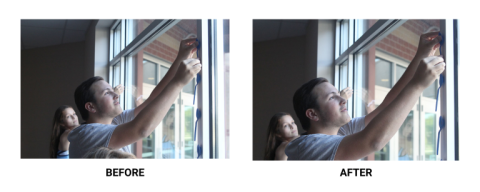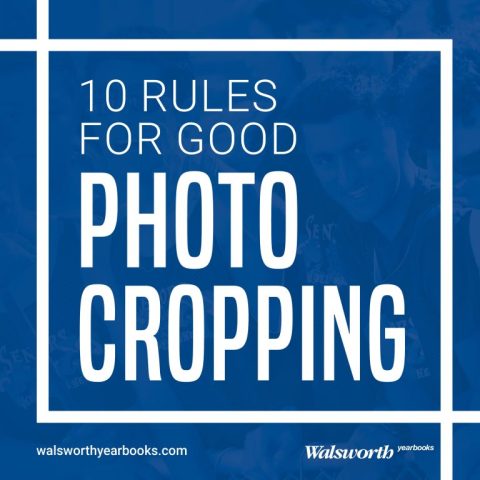Have you ever taken a photo that you really liked, but it wasn’t quite perfect? That’s where good cropping comes in!
Photo cropping means removing unwanted parts from the edges of photos, essentially zooming in. It’s an artform and a powerful tool that can help you refine and enhance your photos so they tell a stronger visual story.
Before you run to your computer and start cropping away, remember the adage with great power comes great responsibility. Let’s dive in and explore some essential rules of cropping to transform your photos from “meh” to “magnificent!”
1. Prioritize visual impact
If cropping a photo to fit a layout weakens the photo’s impact, change the layout or select a new image. Sometimes the strongest visual story is in the uncropped image. Before cropping your photo to fit on a spread or mod, first study the photo and decide if it is the right fit for that area. This helps ensure your photo and the spread retain their narrative power and engage your audience.
2. Minimize clutter
Crop out visual distractions, allowing the story behind the image to shine through. Removing unnecessary elements from your photo directs attention to the focal point of your image and creates a more compelling visual narrative.
For example, if you’re capturing a candid moment of students laughing together outside, cropping out distracting background elements such as cars driving through a busy parking lot can draw the eye directly to the facial expressions and strengthen the emotional impact of the photo. Cropping out clutter ensures your photos tell the story effectively and leave a lasting impression. So, channel your inner Marie Kondo and tidy up those photos.

3. Enhance composition
For a more visually pleasing image, crop to improve the composition of the photo. Try using the rule of thirds grid and place the main subject on a line or intersection. Even a small adjustment can make a big difference. Don’t be afraid to play around to find the crop that best fits your images story. Doing this will help amplify your photos from simple snapshots into powerful narratives that draw your readers’ eyes in.
4. Zoom in for impact
For sports action photos, tight cropping creates a stronger feeling of impact and intensity. The best way to do this is by moving closer to the action when you’re taking the photo. However, if that is not an option, a telephoto lens works as well. When you think of great sports photos, you probably think about how they show raw emotion, adrenaline, determination, concentration, excitement, energy and so much more. If your photo is far away from the athletes, your viewer can’t experience those feelings and embrace the power of the moment you captured.
By eliminating unnecessary background details through cropping, both in the location you take the photo and in post-production, you can draw eyes directly into the heart of the action. By simply moving your feet, getting closer to the action and zooming in for the best crop, you can amp up the drama in your photo. It will take you from a passive observer to dynamic visual storyteller!
5. Crop with intention
A crop should eliminate enough of a person or object so it does not look like a mistake. When deciding where to crop your photo, be intentional. Look for natural stopping points within the frame, such as a person’s joints, clothing lines or something in the background. This helps give your photo a polished look, it enhances composition, guides the viewer’s eye and amplifies the story within your frame.

6. Avoid misrepresentation
Ensure the context of the photo remains clear. Avoid cropping out important elements that might change the perceived meaning or context of the visual story you are trying to tell.
As a photojournalist, it is important to use caution when cropping photos of people or situations. While you aim for a visually appealing image, portraying an honest and nonbiased visual story should also remain key. You don’t want to accidentally chop off any details that might change the meaning of the image. Let the viewers see things for themselves. By keeping essential elements and only cropping out unnecessary ones, you preserve the integrity of your image.
7. Don’t get out of hand
For a more natural looking photo, crop a person at the middle of their limbs, never at a person’s joints such as elbows and knees. Follow the natural lines of the body, and remember that you’re a photographer, not a medical professional; avoid the awkward amputation effect. Cropping in the middle of a limb ensures a sense of realism to the picture and makes your crops appear more intentional.
For example, if you took a photo of a cheerleader holding up a pom-pom cheering during a football game, cropping the photo at a joint could appear jarring. Use this rule so your images look more natural and intentional.
8. Highlight expressions
Use a close crop to highlight expressions and reactions when capturing stories. When cropping a photo, ditch the distractions and zoom in on the feels. Look at your subjects’ faces; tight crops help a person feel the emotions playing out in the image. By doing this, your viewers can dive deeper and connect with the image, feeling the energy the picture is conveying. It helps them understand the story.
Picture this: you receive an assignment to take photos for an Academics spread that will feature a story about chemistry, so you decide to go to the lab when they are doing an experiment with fire. Imagine the impact of capturing a close-up shot of two lab partners, their faces illuminated by a burst of flame, filled with excitement and surprise. If you are zoomed out, you might miss their expressions and those expressions are what can take a photo from “meh” to “magazine-worthy.”
Remember, cropping in camera while you take the photo is just as important as post-editing. It’s often the details and emotions captured in close-up shots that truly captivate.

9. Maintain balance
Consider the negative space around the subject to maintain balance. Avoid leaving too much empty space on one side or the other, which can create an unbalanced feeling. A balanced composition guides the eye naturally throughout the photo. Even subtle adjustments may significantly affect the overall impact.
Imagine your photo like a pizza, with your subject as your topping of choice. You wouldn’t want all the toppings piled on one side, leaving the other half bare, right? The same goes for photos. Too much empty space can throw the whole thing off balance and make it feel awkward.
Let’s say you took a photo of a student snowboarding. If you crop out too much, you might miss the beautiful snow-covered pine trees in background, but zooming out too far could make the photo feel lacking or incomplete. The sweet spot is cropping it just right, with the snowboarder and the trees balanced in the frame. This creates a visually dynamic photo and showcases an epic moment.
10. Be respectful
Everyone deserves to be shown with respect in photos. Avoid cropping in a way that could be considered offensive, mean, deliberately unflattering or disrespectful. You want to be ethical, not shady. Cropping should help enhance the subject, while still maintaining ethical photojournalistic practices.
You want to ensure both accuracy and respectful representation of the people and situations within your photographs. By maintaining this sense of respect and avoiding unnecessary negativity, you can ensure your photos celebrate the people and moments they capture.
As a photojournalist, you should always strive to elevate your storytelling through the power of photography and good cropping! While you capture compelling moments, don’t be afraid to experiment with these different cropping techniques to take your photos to the next level.
Now that you know the essential rules for good cropping, it’s time to put your skills to the test. Open your photo editing software and start experimenting! Remember, practice makes perfect, and with these tips and a little creativity, you’ll be cropping your photos like a pro in no time.





